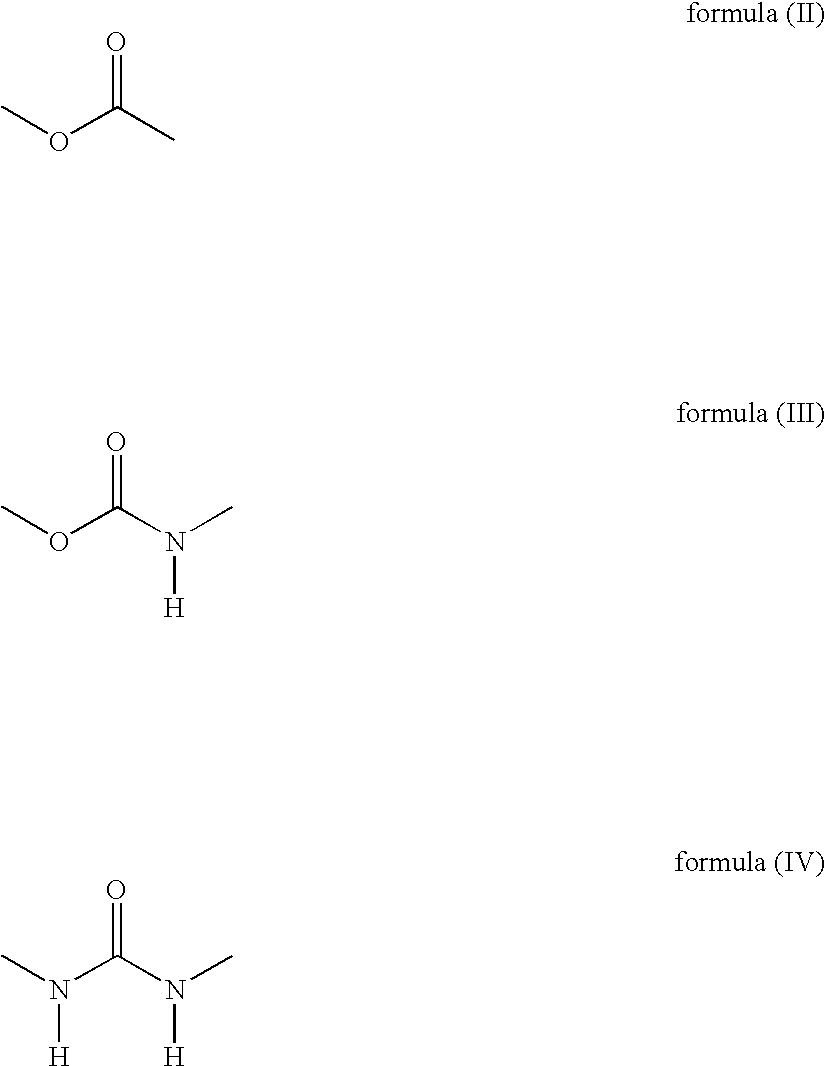Fluorinated polyurethane composition
a technology of fluorinated polyurethane and composition, which is applied in the direction of film/foil adhesive, textile and paper, fibre treatment, etc., can solve the problems of difficult to provide both properties to a single substrate for any appreciable length of time, the trend of producing textiles with natural/synthetic blends of fibers tends to aggravate the situation, and the soil release properties are worse. achieve outstanding anti-staining ability and durable
- Summary
- Abstract
- Description
- Claims
- Application Information
AI Technical Summary
Benefits of technology
Problems solved by technology
Method used
Image
Examples
example 2
Synthesis of Polymer (PUR-2))
[0116]Following the teachings of EP 1369442 A (SOLVAY SOLEXIS SPA) Dec. 10, 2003, an anionic polyurethane was synthesized reacting:[0117]507 g of (per)fluoropolyether (PFPE) diol (Fluorolink® D10H), having hydroxyl equivalent weight 761 (666 meq.);[0118]148 g of isophorone diisocyanate (1333 meq); and[0119]46 g of dimethylpropionic acid (DMPA) (671 meq) salified with 27 g of triethyl amine (267 meq).
[0120]An aqueous dispersion with a solid content, determined as dry residue, of 25% by weight of polymer (PUR-2) having anionic group was obtained.
example 3
Synthesis of Polymer (PUR-3))
[0121]Following the teachings of EP 1559733 A (SOLVAY SOLEXIS SPA (IT)) Aug. 3, 2005, a cationic polyurethane was synthesized reacting:[0122]179 g of (per)fluoropolyether (PFPE) diol (Fluorolink® D10H), having hydroxyl equivalent weight 750 (239 meq.);[0123]53 g of isophorone diisocyanate (477 meq);[0124]7 g of 3-diethylamino-1,2-propandiol (DEAPD) (95 meq);[0125]6.7 g of N-(2-aminoethyl)-aminopropyltrimethoxysilane (AEAPTMS) (60 meq); and[0126]3.2 g of propanediol (84 meq).
[0127]An aqueous dispersion with a solid content, determined as dry residue, of 25% by weight of polymer (PUR-3) having cationic group was obtained.
Preparation of Textile Treatment Compositions
example 4
Composition for Cotton Treatment
[0128]60 g of the water based polymer (PUR-1) dispersion of the Example 1 were mixed with:[0129]20 g of REPEARL® 8025[0130]20 g of REPEARL® MF[0131]80 g of FREEREZ® PFK[0132]20 g of Catalyst 531[0133]20 g of DOUSOFT® 1062
[0134]The mixture was then diluted with water to a total volume of 1 litre.
PUM
| Property | Measurement | Unit |
|---|---|---|
| Hydrophilicity | aaaaa | aaaaa |
| Durability | aaaaa | aaaaa |
Abstract
Description
Claims
Application Information
 Login to View More
Login to View More - R&D
- Intellectual Property
- Life Sciences
- Materials
- Tech Scout
- Unparalleled Data Quality
- Higher Quality Content
- 60% Fewer Hallucinations
Browse by: Latest US Patents, China's latest patents, Technical Efficacy Thesaurus, Application Domain, Technology Topic, Popular Technical Reports.
© 2025 PatSnap. All rights reserved.Legal|Privacy policy|Modern Slavery Act Transparency Statement|Sitemap|About US| Contact US: help@patsnap.com



